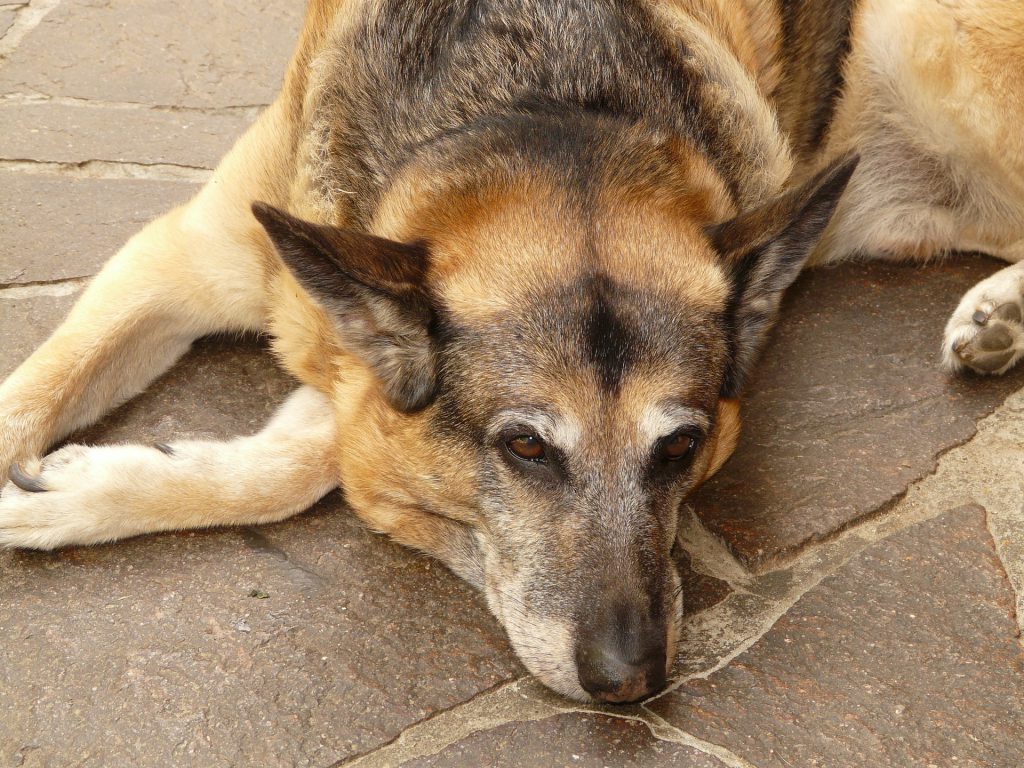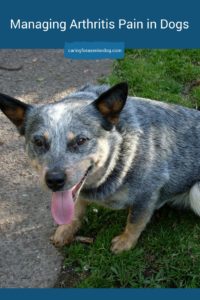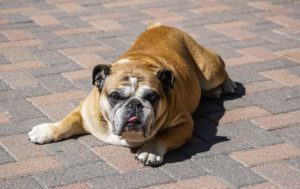
Of course I am aware of how common arthritis is, and what a painful condition it can be. What I wasn’t aware of, until I started my Facebook group Senior Dog Care Club, were the heart wrenching stories of pet parents who were watching their dogs in pain, desperately searching for solutions.
I am encouraged by the number of treatment options available – from drugs to acupuncture, laser to turmeric golden paste. I’m so happy when I read success stories, and thankful for the incredible commitment of these  guardians who don’t give up.
guardians who don’t give up.
I realise not enough can be written about this and so many other topics, as each one of us deals with our aging dogs and the issues that often accompany that process.
The post you are about to read was written by Dr. Mar Alonso, a holistic vet I know with a practice in Petersfield, England. Originally published in her newsletter, she sent this to me to publish for all of you, in the hopes it will be of help, so here it is!
Managing Arthritis
It is estimated that 90% of dogs and cats will develop one form or another of arthritis, degenerative, septic or immunomediated, being the degenerative joint disease or osteoarthritis the most common by far.
Signs of arthritis tend to start to manifest when your pet is reaching old age (this is different for each species and breed) but it could also manifest at a much younger age depending on the severity of the underlying cause.
The causes of osteoarthritis range from idiopathic (meaning we haven’t got a clue) to trauma (being in an accident or an intended surgical procedure) and inherited defects (such as dysplasia or malformation of the joints -elbow and hips being the most common-).
Pain and loss of function of the affected joints are the symptoms, and the signs that you will observe could be clear lameness with shifting weight to non-affected areas, bunny hopping, swaying gait or more subtle ones like licking joints, lagging on walks, difficulty reaching the food bowls or jumping in the car and withdrawal from playing with other pets or even aggression.
Traditionally anti-inflammatories were the only treatment offered for this condition that cannot be cured but that can, however, be managed successfully with a multimodal approach.
The key areas to focus on are:
Pain relief
This can also be achieved in a multimodal way and we recommend:
- Natural anti-inflammatories, such as Omega 3 fatty acids, Boswellia or Turmeric.
- Acupuncture and Quiropraxia or other manual therapies (Cranio Sacral Therapy, Bowen and TTouch).
- Laser Therapy.
- Non steroidal anti-inflammatories at the minimum effective dose whenever all the above is not sufficient.
Diet and weight control
Obesity will put extra stress on the affected joints and it is crucial to achieve a slim shape based on body score rather than targeted weight. You must be able to see your pet’s waist from above as well as from the side, and feel  the ribs without having to dig your fingers in the fat deposits.
the ribs without having to dig your fingers in the fat deposits.
A biologically appropriate diet for the species – dogs and cats do not need grains (grains are in commercial pet foods including the prescription diets- just because they are cheap, very cheap), and with as little processing as possible, free from additives, colourings, pesticides and other undesirable chemicals. This will reduce the intake of pro-inflammatory foods and food ingredients that will worsen the condition.
Regular urine and blood checks
This is particularly important because anti-inflammatory drugs, but also some supplements, can cause renal disease, liver impairment or damage to the gastrointestinal walls. Regular checks will spot changes before your pet is showing signs of the side effects.
Exercise
It is imperative to keep moving the muscles that support the affected joints, always avoiding high impact exercise such as jumping and running at full speed. Swimming is perfect and appropriate for most of the cases. Your vet will tell you if it is suitable for your pet.
Regular follow ups with your vet
As the disease progresses, changes in the treatment plan will be necessary and regular veterinary checks will spot those changes. Two to four checks per year ideally as your pet grows older. As acupuncture can only be given by veterinarians, you are guaranteed a thorough veterinary examination every time your pet receives this treatment.
It is possible to do more than just giving an anti-inflammatory tablet… The multimodal approach is kind to your pets and will give them extended years with quality of life.
Get your FREE report – Tell Tail Signs Your Dog May Have Dementia
I would like to invite you to join Senior Dog Care Club, my Facebook group for senior dog parents. There you will find lots of helpful tips and advice, a place to ask questions and share experiences. I look forward to welcoming you.

 Ways to Keep Your Senior Dog Active
Ways to Keep Your Senior Dog Active
Pain relief is so important – because movement and strong muscles go a long way to protect the joints. But that cannot happen if there is too much pain for the dog to move.
It makes me so sad when I read stories of dogs in pain because of arthritis, and they’re trying so many different treatments to get it under control. It is ironic though isn’t it. Getting out and about is good for arthritis, but if they’re in too much pain because of it they can’t move which makes it worse…
Thank you for such an informative article! Our labrador was diagnosed with arthritis in his back when he went in for mast cell cancer surgery. The arthritis didn’t noticeably bother him until he got to be 13-14 years old. It was around that time we started him on Adequan injections. I’d be curious to know what this vet thinks of the injections for arthritis. They worked ok and were a better option, in my mind, than giving him a rimadyl every day. Lastly, I thought it was really interesting that she brought up grains in commercial pet food. That they can contribute to inflammation and worsen arthritis. That’s a fact that I did not know, so thank you!
Thank you Stephanie, quite a few people in my FB group have given their dogs Adequan injections, and I believe they have found success. There are lots of natural options that might help including laser therapy,hydrotherapy, acupuncture, turmeric golden paste… I have actually heard about grains possibly being a contributing factor. When I first adopted my dog Jack I noticed he scratched a lot, so I started feeding him grain free and it made a huge difference.